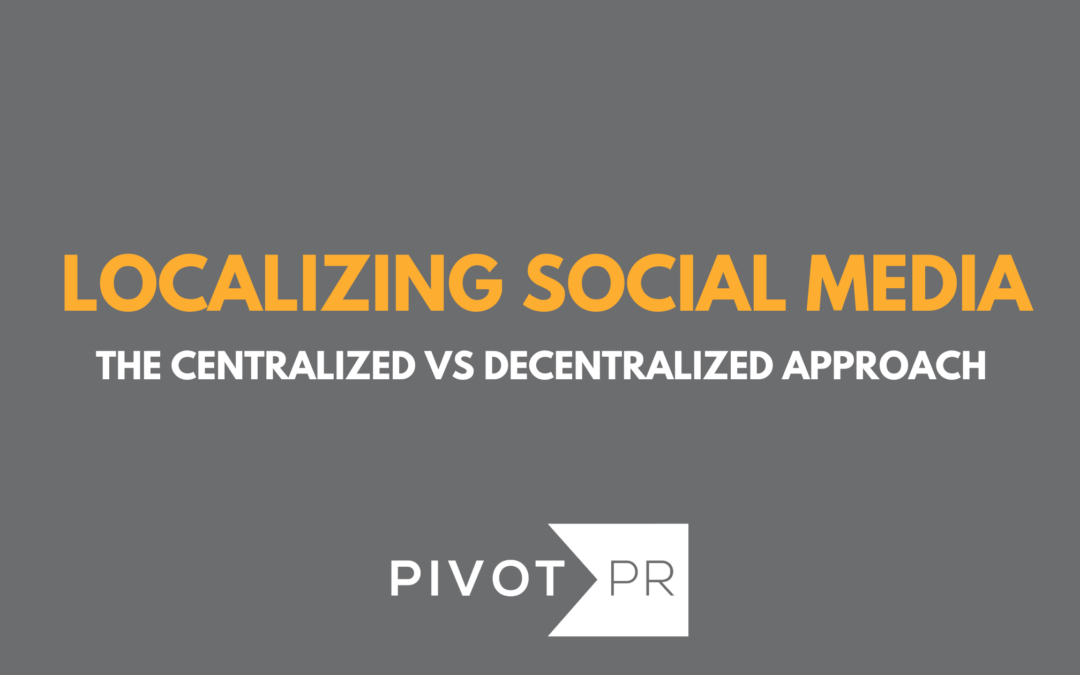Social media is one of the most powerful tools a business can leverage to connect with their audience. How a social media team chooses to manage this tool can significantly impact its effectiveness. One key decision all social managers will face at some point is whether to adopt a centralized or decentralized strategy. Let’s break it down:
The Centralized Approach
Centralized social media means there is one consolidated, central authority or page, typically being the corporate or brand headquarters. This one page will represent all activity in every market, as the “official” page. Having a centralized approach might benefit organizations who are looking for:
- Consistent Branding: Centralization ensures a uniform brand voice, messaging, and visual identity across all platforms. This consistency strengthens brand recognition and credibility.
- Efficient Resource Utilization: It allows for streamlined resource allocation, as a centralized team can manage content, engagement, and strategy for all platforms. This is particularly effective for smaller organizations with limited resources.
- Comprehensive Analytics: Centralized management allows for a more comprehensive analysis of performance metrics across all channels. This aids in better-informed decision-making and strategy refinement.
This is a great option for large brands with a unified identity, financial institutions, or nonprofits.
The Decentralized Approach
Decentralized social media distributes responsibilities and content creation across multiple locations or entities within an organization. This is typically done by various markets or regions having individual social media pages. In this approach, various local/regional branches, departments, or teams have a certain level of control in creating and managing content for their respective social media channels. Having a decentralized approach might benefit organizations who are looking for:
- Localized Content Creation: In a decentralized setup, local or regional teams have the autonomy to create content tailored to their audience’s preferences, culture, and language. This local touch often resonates better with diverse demographics.
- Rapid Response to Regional Needs: Decentralization allows for quicker responses to localized issues or trends, fostering a more agile and responsive approach to regional needs or crises.
- Cultural Relevance and Connection: A decentralized approach facilitates better understanding of local culture and trends, fostering deeper connections with the audience. Not all trends are global, and assuming otherwise might create irrelevant content.
This is a great option for global corporations with regional offices, franchise businesses, or hospitality brands.
When to Localize vs. Decentralize
The organization or brand’s overall goal for their social media channel should play a large role in deciding when to keep social media central, or allow it to be controlled locally. Ask yourself this key question:
What do we want to get out of our social media channels?
If the answer is along the lines of: “we want people to visit us on social media to find out what is going on at each of our many locations,” you might want a decentralized strategy. In this instance, each store or region having its own channel will allow them to highlight events going on in that particular area, helping to increase local engagement.
On the other hand, if your answer is closer to: “the key objective of our social media is to create strong, uniform brand recognition,” a centralized strategy might be the path for you. As opposed to a decentralized strategy, where each market is given the freedom to produce unique content, a centralized strategy is one message, one voice, 24/7.
In summary, the decision to centralize or decentralize social media channels should be guided by your business’s specific needs, audience diversity, and market dynamics. There are pros and cons to having a centralized vs. decentralized strategy, but there is no one correct answer. However, depending on your long-term goals and organizational structure, one might be more suitable for your company over the other.
